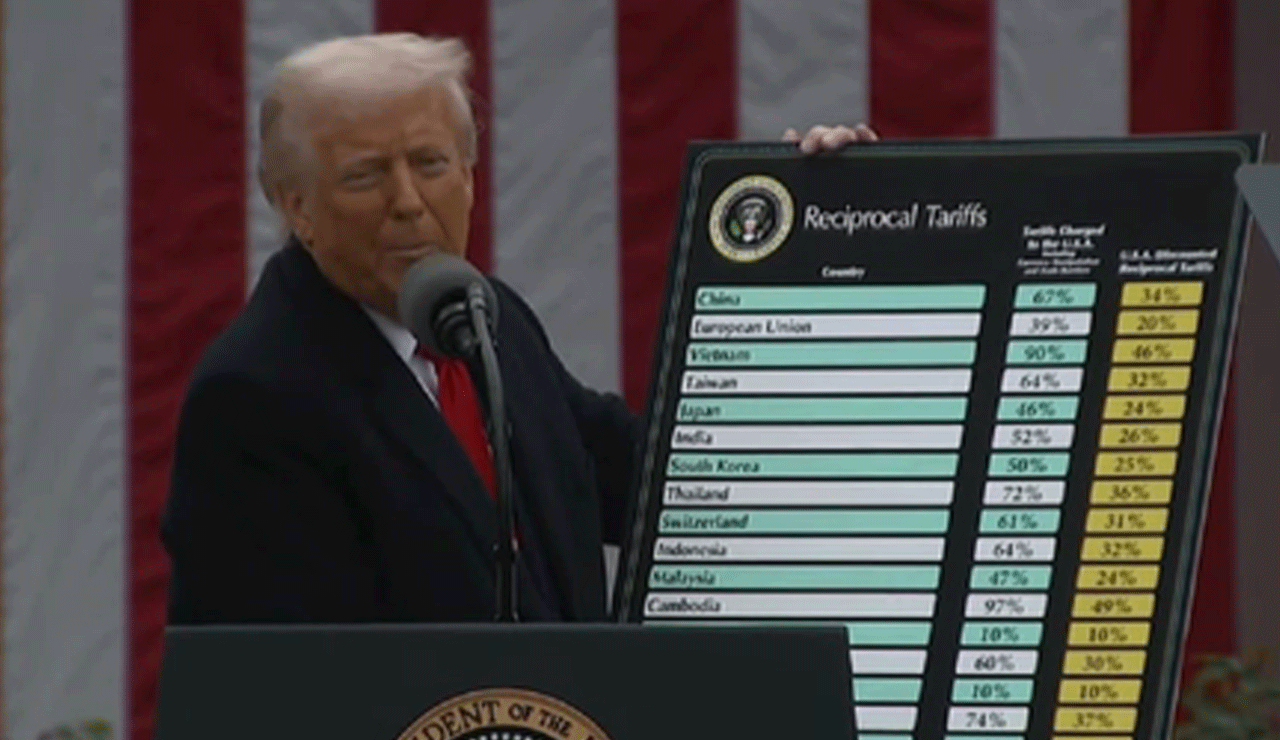Trump Unveils ‘Kind’ Reciprocal Tariffs, Targets India with 26% Levy
US President Donald Trump has rolled out new tariffs targeting several countries, with a special focus on India, China, and the European Union. The new trade measures, dubbed "kind" reciprocal tariffs, aim to reduce America's trade deficit and bring more manufacturing back to the US.

Washington: US President Donald Trump has rolled out new tariffs targeting several countries, with a special focus on India, China, and the European Union. The new trade measures, dubbed “kind” reciprocal tariffs, aim to reduce America’s trade deficit and bring more manufacturing back to the US. Trump announced a baseline rate of 10% on all imports, alongside higher individualized rates for specific countries.
Table of Contents
Trump’s Tariff Strategy: A ‘Kind’ Approach
The US President’s new tariff plan includes a 26% tariff on imports from India, a 34% tariff on goods from China, and a 20% levy on European Union (EU) imports. Trump emphasized that these rates are lower than what the targeted countries charge on US products, calling the measures a more “kind” response. The President stated that these tariffs would be “approximately half” of what other countries impose on US goods.
Countries Affected by the New Tariffs
Alongside India, China, and the EU, several other nations will face increased tariffs under the new policy. These countries include the UK, Japan, South Korea, Indonesia, Taiwan, Vietnam, Cambodia, Switzerland, Bangladesh, Pakistan, and Sri Lanka. Many of these nations are US allies, but Trump has repeatedly criticized trade partners with high surpluses or those imposing heavy tariffs on US products.
Trump’s Criticism of India’s Trade Practices
President Trump took aim at India’s trade policies, which he claimed levy an average tariff rate of 52% on US imports. Referring to India’s Prime Minister Narendra Modi, Trump acknowledged their friendly relationship but criticized the country’s “unfair” trade practices. Trump explained that the US will now impose a 26% tariff, half of what India charges, which he believes represents a fairer approach.
Also Read: Sensex, Nifty End Higher Ahead of US Reciprocal Tariffs Announcement
Aiming to Reduce Trade Deficits and Revive US Manufacturing
Trump’s broader goal with the new tariffs is to reduce the US trade deficit, bring manufacturing jobs back to the country, and encourage foreign nations to lower their barriers to American products. He claimed that countries like Vietnam, which imposes a 90% tariff on US imports, will face a 46% tariff, in line with the “reciprocal” principle.
Trump’s Vision: “Liberation Day” for American Industry
In his announcement, Trump referred to April 2, 2025, as “Liberation Day,” symbolizing the day when American industry was “reborn.” He described the US as being “looted” and “plundered” for decades by both friendly and adversarial nations. According to Trump, the new tariffs are part of a broader effort to reclaim America’s economic destiny and restore its manufacturing power.
Previous Tariff Actions
This latest move builds on Trump’s previous rounds of tariffs, including a 25% tariff on steel and aluminum imports, 25% on Canadian and Mexican imports, and a 10% tariff on Chinese goods. Additionally, a 25% duty on imported cars, trucks, and auto parts is already in place, with more sector-based tariffs, such as those on pharmaceuticals, expected in the future.
Trump’s “kind” reciprocal tariffs are just one component of his broader plan to reshape US trade policy, reduce deficits, and promote domestic economic growth. As these new tariffs take effect, the global trade landscape is likely to experience significant shifts.
